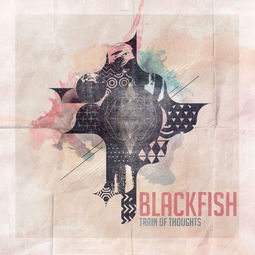Content:
Fishing in the Great River, a majestic waterway that stretches across numerous provinces, has always been a favorite pastime for anglers. With its abundant fish population and scenic landscapes, it offers a perfect retreat for those seeking tranquility and adventure. However, to make the most out of your fishing experience, it is crucial to acquire some essential techniques. In this article, we will delve into the art of fishing in the Great River, providing you with valuable insights and tips to help you become a successful angler.
Understanding the Great River's Fish Species
Before embarking on your fishing adventure, it is essential to familiarize yourself with the fish species that inhabit the Great River. Some of the most common fish species include carp, crucian carp, catfish, and bream. Each species has its unique characteristics and preferences, which can significantly impact your fishing techniques.
1 Carp: Carp are one of the most sought-after fish species in the Great River. They are known for their voracious appetite and adaptability. To catch carp, use heavy-duty rods and reels, as they can be quite strong. Opt for a variety of baits, such as corn, bread, or worms, and try to locate areas with shallow water and abundant vegetation.
2 Crucian Carp: Similar to carp, crucian carp are also popular among anglers. They are smaller in size but can be quite elusive. Use lighter gear and small baits like bread or worms. Look for areas with a mix of shallow and deep water, as crucian carp tend to move between these zones.
3 Catfish: Catfish are bottom-dwellers and can be found in both shallow and deep waters. To catch catfish, use heavy-duty rods and reels, as they can be quite strong. Your bait options include chicken liver, fish heads, or shrimp. Locate areas with a mix of sand and mud, as catfish often congregate in these areas.
4 Bream: Bream are smaller fish but can be quite abundant in the Great River. Use light to medium-weight rods and reels, and opt for small baits like bread, worms, or maggots. Look for areas with abundant vegetation and slow-moving water.
Choosing the Right Equipment
The equipment you choose can significantly impact your fishing success. Here are some essential items to consider:
1 Rod and Reel: Select a rod and reel that match the fish species you are targeting. For instance, heavy-duty rods and reels are ideal for catching strong fish like carp and catfish, while lighter gear is suitable for smaller species like crucian carp and bream.
2 Line: Choose a line that matches the weight of your bait and the strength of the fish you are targeting. For instance, a 10-15lb line is suitable for catching carp, while a 4-6lb line is ideal for crucian carp and bream.
3 Lures and Baits: Stock up on a variety of lures and baits to cater to different fish species. Corn, bread, worms, and maggots are popular choices for the Great River.
4 Tackle Box: A well-organized tackle box is essential for a successful fishing trip. Ensure you have all the necessary tools, such as hooks, sinkers, swivels, and leaders.
Mastering the Art of Casting
Casting is a fundamental skill that can make or break your fishing experience. Here are some tips to help you improve your casting technique:

1 Hold the Rod: Grip the rod firmly but comfortably. The thumb should be placed on the reel, while the other fingers should wrap around the handle.
2 Load the Reel: Wind the line onto the reel, ensuring it is tight but not too tight. This will help you cast the line with more accuracy.
3 Position the Rod: Point the rod towards your target and slightly bend it. This will help you store energy in the rod.
4 Cast: With a smooth, controlled motion, pull the rod back and then forward towards your target. The line should fly through the air with minimal resistance.
Locating the Best Fishing Spots
To increase your chances of success, it is crucial to locate the best fishing spots in the Great River. Here are some tips to help you find the perfect spot:
1 Research: Utilize online resources, fishing forums, and local angler recommendations to identify the best fishing spots in the Great River.
2 Map the River: Familiarize yourself with the river's layout, including shallow and deep areas, tributaries, and bends. These are often prime fishing spots.
3 Timing: Fish are more active during certain times of the day. Early morning and late evening are usually the best times to fish.
Patience and Persistence
Lastly, remember that fishing is a patient sport. Success often comes to those who are willing to put in the time and effort. Here are some tips to help you stay patient and persistent:
1 Plan Your Trip: Set aside enough time for your fishing trip, as it can take hours to catch fish.
2 Be Flexible: Be open to trying different techniques and locations if your initial attempts are unsuccessful.
3 Enjoy the Experience: Embrace the tranquility and beauty of the Great River, and remember that fishing is about the journey, not just the catch.
In conclusion, fishing in the Great River can be an enjoyable and rewarding experience with the right techniques and equipment. By understanding the fish species, choosing the appropriate gear, mastering casting, locating the best spots, and maintaining patience, you can increase your chances of success. So, grab your rod and reel, and embark on an unforgettable fishing adventure in the Great River!












